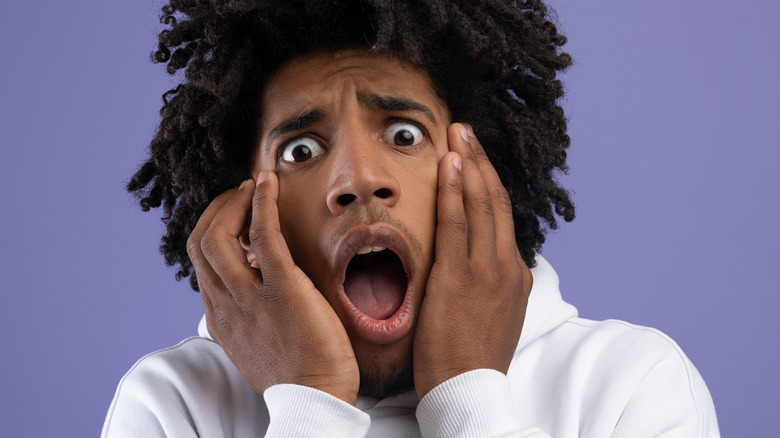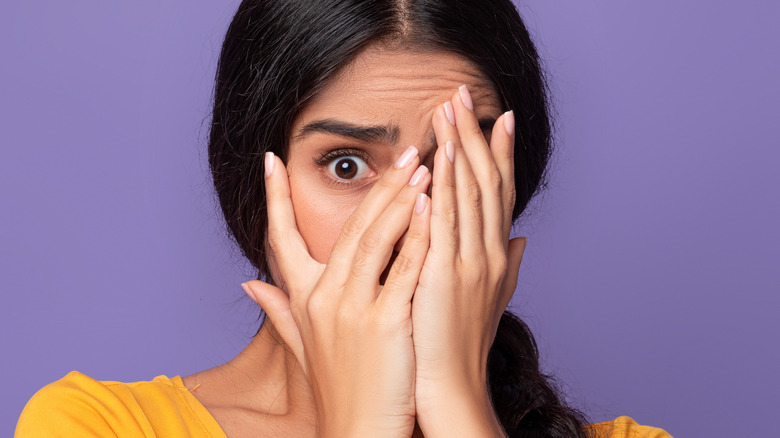What Happens To Your Body After A Jump Scare, According To Science
From scary stories to haunted houses, and from roller coasters to horror films, many — but not all of us — like to feel frightened, and for that reason, we seek out fear on purpose. And according to science, there's a good reason why we seek out the sensation of fear even when our environment hasn't called for it, as "Today" explains. Generally speaking, feelings of fear also serve an important purpose beyond just entertainment: Triggering our fight-or-flight response helps to keep us safe, as Nautilus notes. Fear in humans, or really any other creature, for that matter, plays a part in keeping us away from danger, or to refrain from any activity that might potentially harm us.
On that note, we are all familiar with how frights large and small make us feel — whether we seek out scary situations or not — such as sweaty palms and the sensation of freezing in place, with an elevated heart rate and rapid breathing. What really happens in our bodies to trigger those reactions when we're frightened, though? According to Insider, fear always begins in our brain.
All fear requires a trigger
Though what frightens different individuals will vary, something that will scare or startle almost anyone is called a jump scare — for instance, a sudden, unexpected loud sound. Jump scares are commonly used in horror films to set an audience on edge; think about what happens when someone yells "Boo!" at a young child (or at some adults, for that matter). That unexpected loud sound is a trigger, and as Insider goes on to write, all feelings of fear require a trigger of one kind or another.
Once fear is triggered, an emergency signal of sorts is sent to the thalamus area of our brain, which then travels to our amygdala, which is among the oldest (in terms of evolution) and most crucial of all our brain structures. From there, scary signals go further into the most primitive parts of our brain, releasing hormones throughout our body that induce what's known as the fight-or-flight response. Our fight-or-flight hormones are released as we engage in a long list of automatic and involuntary responses that in total make us feel frightened.
Fear causes the release of adrenaline
The primary reaction when fear signals are sent to our brain is the release of a hormone called adrenaline, as Scientific American explains. As adrenaline courses through our system, our blood pressure is elevated, our heart rates quickens, and extra blood is sent to our extremities, which can lead to that shaky, often lightheaded feeling that many equate with an adrenaline rush caused by a fearful situation. At a basic level, our brain is telling us we're in danger and we must either run or stand and fight.
In instances when we're not really in danger, though, our systems most often return to normal pretty quickly, as the heart rate decreases and the adrenaline dissipates. So why then do some people seek out an adrenaline rush on purpose? Simply because the associated feelings of fear can feel good, in some people's opinion, and especially in controlled environments like while watching a horror film or visiting a haunted house, as "Today" reports — a metabolic spike that can make a person feel powerful, followed by relief. Use caution, though: Too much adrenaline can be deadly, as Scientific American also notes. It is scientifically proven that a person can be scared to death — literally.


